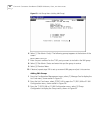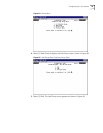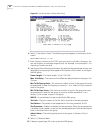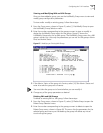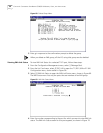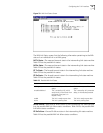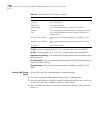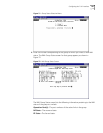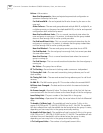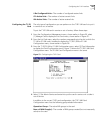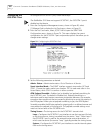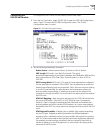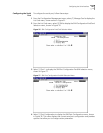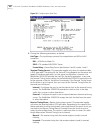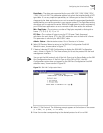
102 CHAPTER 4: CONFIGURING PATHBUILDER S330/S310 MODULES, PORTS, AND APPLICATIONS
Failure—Failure status:
Near End Asymmetric—Near end rejected asymmetrical configuration or
operation chosen by the far end.
Far End Invalid M—Far end rejected the M value chosen by the user on the
near end.
Other Failures—The near end group detected multiple IMA ID, multiple M, or
multiple symmetry, or the group has duplicated IMA ID, or the far end reported
configuration abort without any reason.
Near End Insufficient Links—This is a normal transitional state when the
near end group is coming up. If it persists, it indicates that the group indeed
does not have enough links to come up and pass data.
Far End Insufficient Links—This is a normal transitional state when the far
end group is coming up. If it persists, it indicates that the group indeed does
not have enough links to come up and pass data.
Near End Blocked—The near end group cannot pass data due to LODS.
Far End Blocked—The far end group has enough links, but cannot pass data
for some other reason.
Near End Startup—This is a normal transitional state when the near end
group is coming up.
Far End Startup—This is a normal transitional state when the far end group is
coming up.
No Failure—The group has no failure.
FE Tx Clocking—Far-end transmit clocking mode: common or independent.
Tx Timing Ref. Link—The near end transmitting timing reference port for cell
clock recovery.
Rx Timing Ref. Link—The near end received timing reference port for cell clock
recovery.
Rx IMA ID—The IMA receive group ID. This number reflects the remote IMA ID.
NE State Last Changed—The date and time at which the near-end state last
changed.
Rx Framer Length—Receive M value. The frame length of the first link that can
communicate with the far end is chosen as the frame length of the far end group.
Least Delay Link—The port number of the fasted link in the group.
Oper. LInk Delay—Operational link delay; the actual value of the link differential
delay.
Tx Avable. Cell Rate (cps)—The available cell rate for active Tx links in this
group: 0-28,728 cps for T1, M=128; 0-35,920 cps for E1, M=128. The available
cell rate indicates how much bandwidth can be carried across the group. It varies,
depending on how many links in the group are actually working.
Rx Avable Cell Rate (cps)—The available cell rate for active Rx links in this group:
0-28,728 cps for T1, M=128; 0-35,920 cps for E1, M=128. The available cell rate
indicates how much bandwidth can be carried across the group. It varies,
depending on how many links in the group are actually working.
# Tx Configured Links—The number of configured transmit links.



